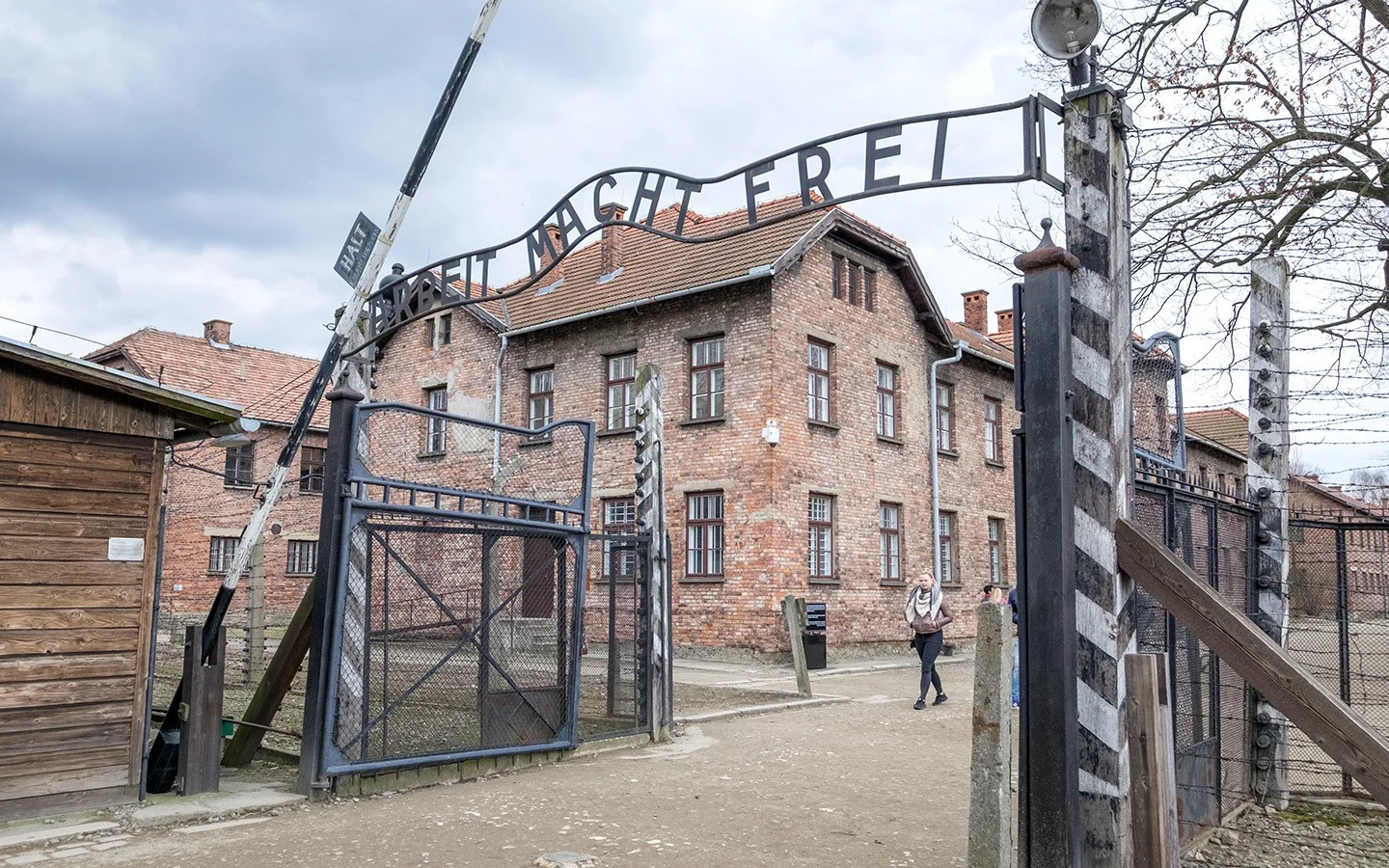
The skies are dark and moody as we pass through the gates of Birkenau, part of the Auschwitz concentration camp near Kraków in Poland. As we walk across this huge, bleak stretch of land a cold wind whistles by and somewhere in the distance I can hear the sound of voices singing. At first it’s so faint I think I might’ve imagined it, but the wind picks up the tune and carries it through the barbed-wire fence, past ruined buildings and over the roofs of wooden huts.
It’s a haunting sound in a place where you can feel ghosts all around you. As I get closer I can see a group of Jewish men and boys, holding onto each other and singing a hymn in Hebrew as they walk along the railway tracks. I can’t understand the words they are signing but I can feel the emotion coming through and I can’t stop a shiver running down my spine.
Read more: 5 reasons to visit Kraków, Poland

Map of Auschwitz I (A) and Auschwitz II/Birkenau (B)
Visiting Auschwitz-Birkenau
Auschwitz-Birkenau is the site of one of the greatest mass murders in history. If you grew up sometime in the last 40 years you’ve probably studied the Second World War at school, you’ve watched Schindler’s List, you’ve read The Boy in the Striped Pyjamas. Like me you probably feel like you know about the Holocaust, you know about Auschwitz.
But arriving in the place where it all happened and walking through those gates made me realise I didn’t know anything. That knowing the facts doesn’t mean you know the story. And that even the facts take on a different aspect when you’re standing in the spot where it all took place.

Through the fence at Auschwitz
The name Auschwitz is synonymous with the worst things human beings can do to each other. It was the largest of the Nazi concentration camps, where over 1.1 million people were killed. Most were Jews but there were also Poles, Hungarians, gypsies and anyone else unlucky enough to catch the attention of the Nazis. The Nazis took a Polish army base in the town of Oświęcim and turned it into a multi-site concentration camp that practiced mass murder on an industrial scale.
And today two of those sites have been turned into a museum, a memorial to those who lost their lives. Auschwitz-Birkenau isn’t somewhere you ‘want’ to visit, but it’s somewhere that you should visit, somewhere that is guaranteed to have an affect on you.
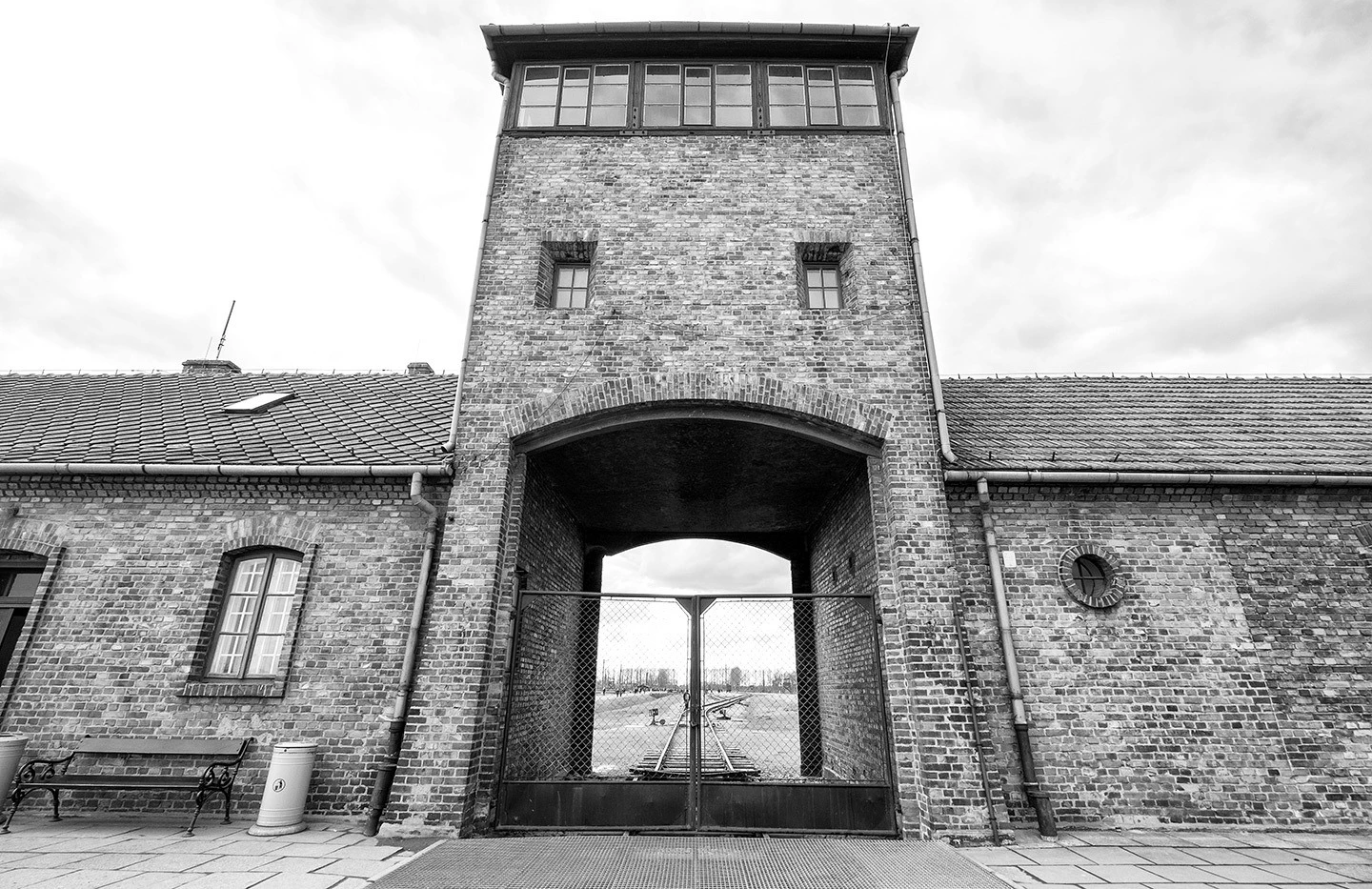
The gates to Birkenau
Birkenau
Most tours of Auschwitz-Birkenau start with the original Auschwitz camp, but our guide took us first to Auschwitz II – or Birkenau. It’s the largest of the three main Auschwitz camps, built in 1941 to house up to 200,000 prisoners after the original camp got too overcrowded. Birkenau is where the scale of the horrors that went on here start to hit you.
Birkenau stretches over 425 acres of bleak, barren landscape, with lines of barbed-wire fences and watchtowers stretching off into the distance in each direction. It was a huge extermination camp where the Nazis industrialised death, building four gas chambers to dispose of as many Jews as they could as efficiently as possible.
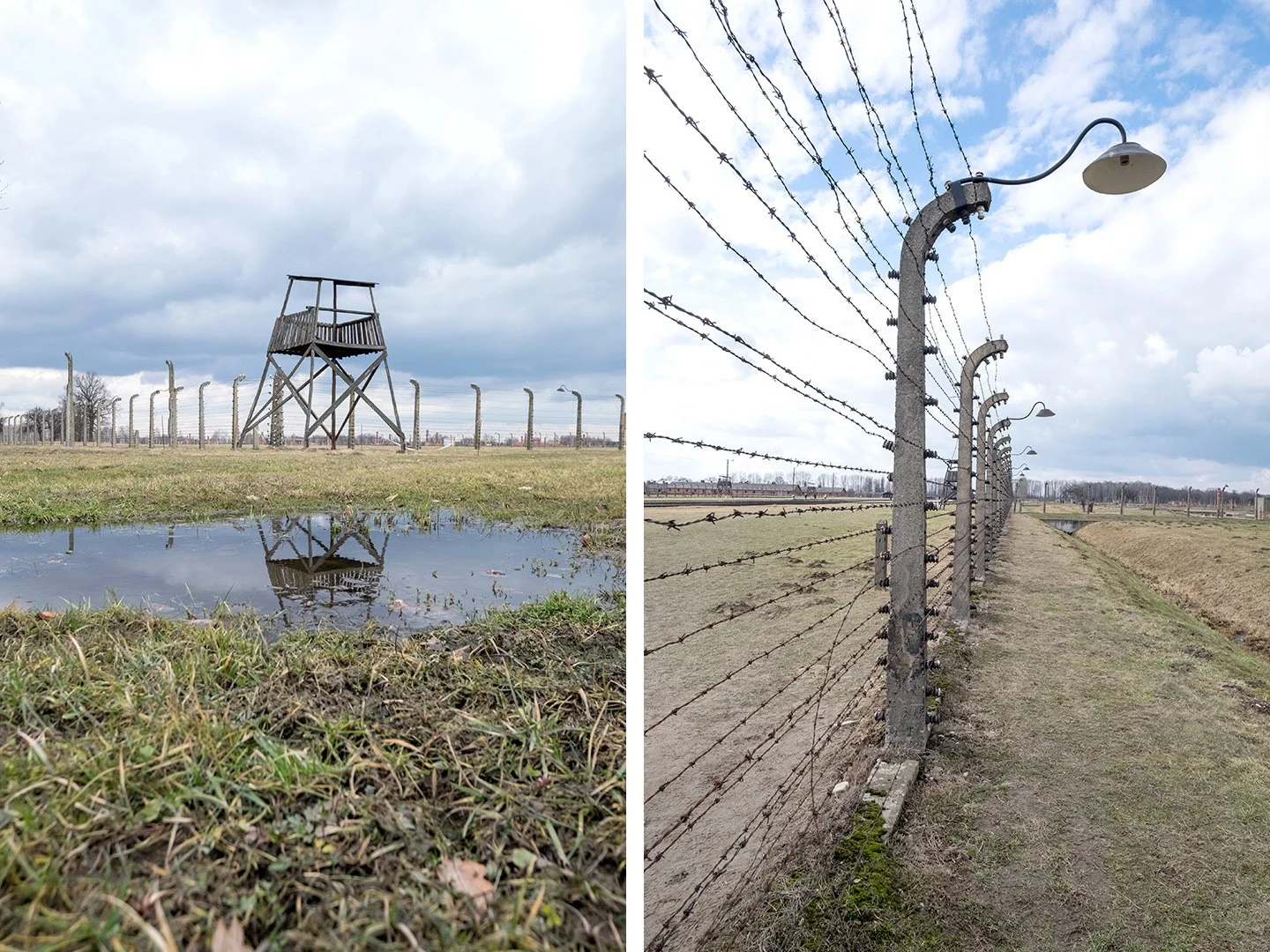
Watchtowers at Birkenau
Running through the middle of the Birkenau site is the railway track. This is where trains would arrive, carrying prisoners from all across Europe. It’s where the guards selected who of them would live and who would die – the fit would be sent to work in the camp and the sick, elderly and children would go straight to the gas chamber.
Most of Birkenau’s buildings were destroyed in 1945 when the Nazis tried to hide the evidence of what they’d done from the approaching Soviet army. But you can walk around piles of brick and twisted metal where the gas chambers once stood, and go inside recreations of the wooden huts where people would sleep, up to 1000 people tightly packed in like cattle.
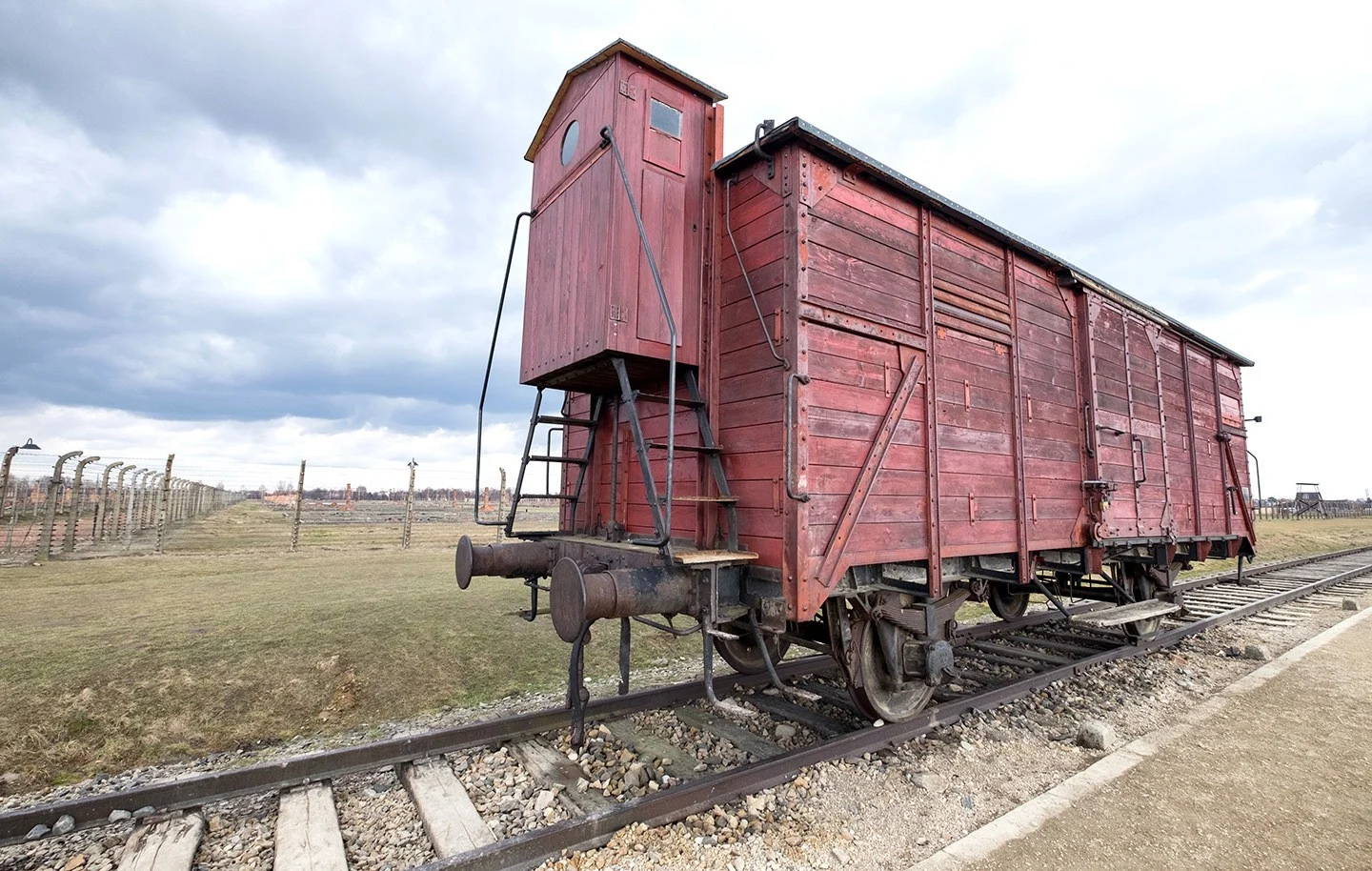
The railway carts
Even in March the cold and damp made it uncomfortable outside for too long. I couldn’t imagine what it would be like to live through a winter here, working 12 hours a day in thin clothes and wooden shoes on minimal food. Fighting disease, exhaustion and abuse every day to stay alive.
Visiting Birkenau isn’t like a museum, you’re mostly left on your own with your thoughts. Left to soak it all up and try to make sense of what took place here. A lot of people worry that they’d get too upset visiting the camps, but I found I came through it all almost feeling numb, like it was too much to take in, too much for me to possibly comprehend.

Toilet block at Birkenhau
Auschwitz
Where Birkenau brings the scale to life, at Auschwitz I it’s all about the details. The original Auschwitz camp started off as a Polish army barracks which was converted into a prison camp for political prisoners in 1940. So much of the Nazis’ first and smallest camp has been preserved, right from the entrance gate where ‘Arbeit macht frei’ is carved into wrought iron. ‘Work will set you free’ – a horrendous irony in the place where so many people came to die.
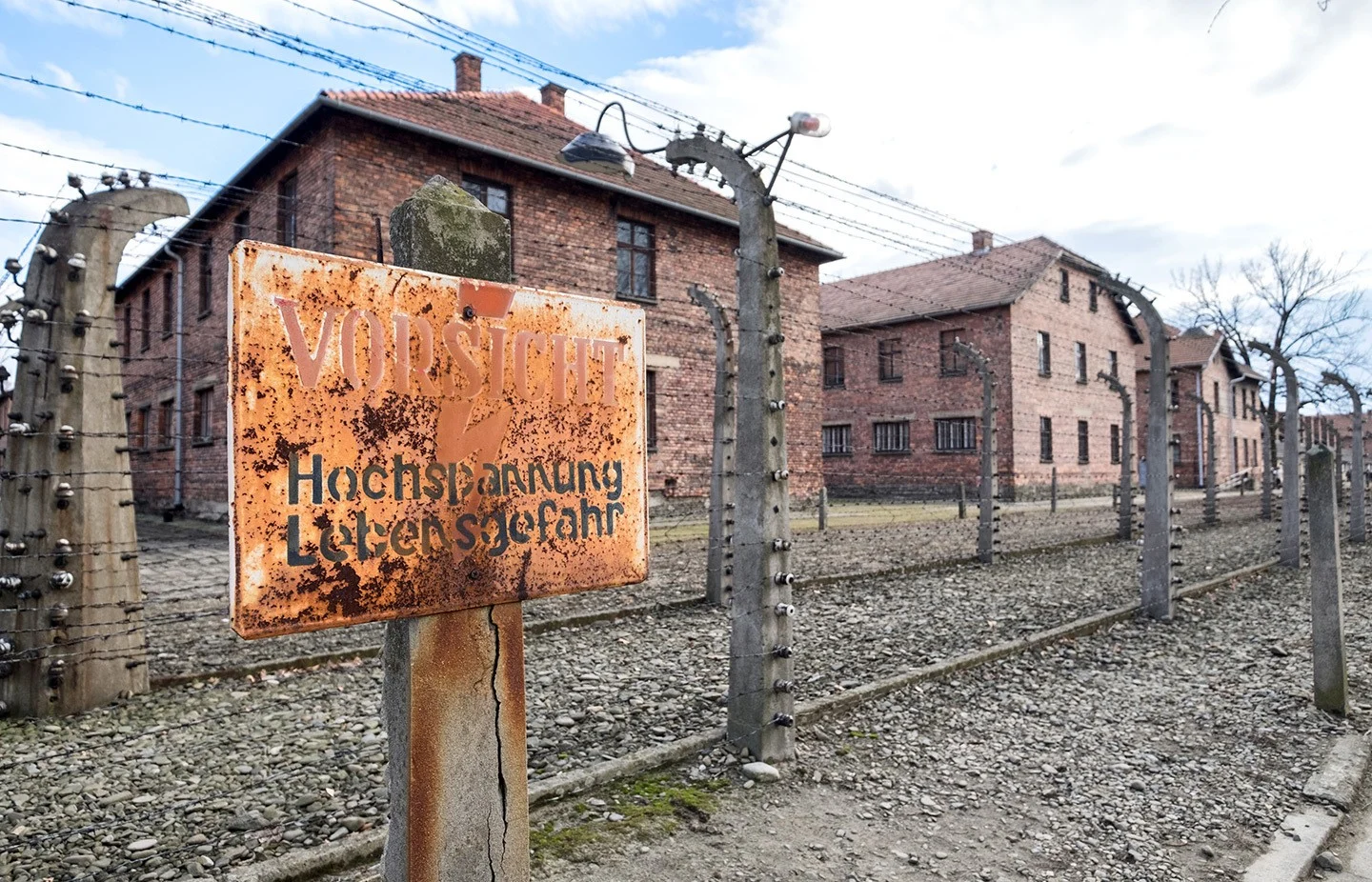
Inside Auschwitz I
You can walk through the camp’s rows of brick huts, each of which had a different function. There’s Hut 20, the so-called ‘hospital’ which was more a lab where doctors like Dr Mengele used prisoners as guinea pigs as they experimented with different ways of killing them more efficiently. There’s Hut 11, the prison within a prison where guards would come up with new and more horrific ways to torture the prisoners who dared to rebel – by starvation, suffocation or being forced to stand in a tiny cell one metre square for days.
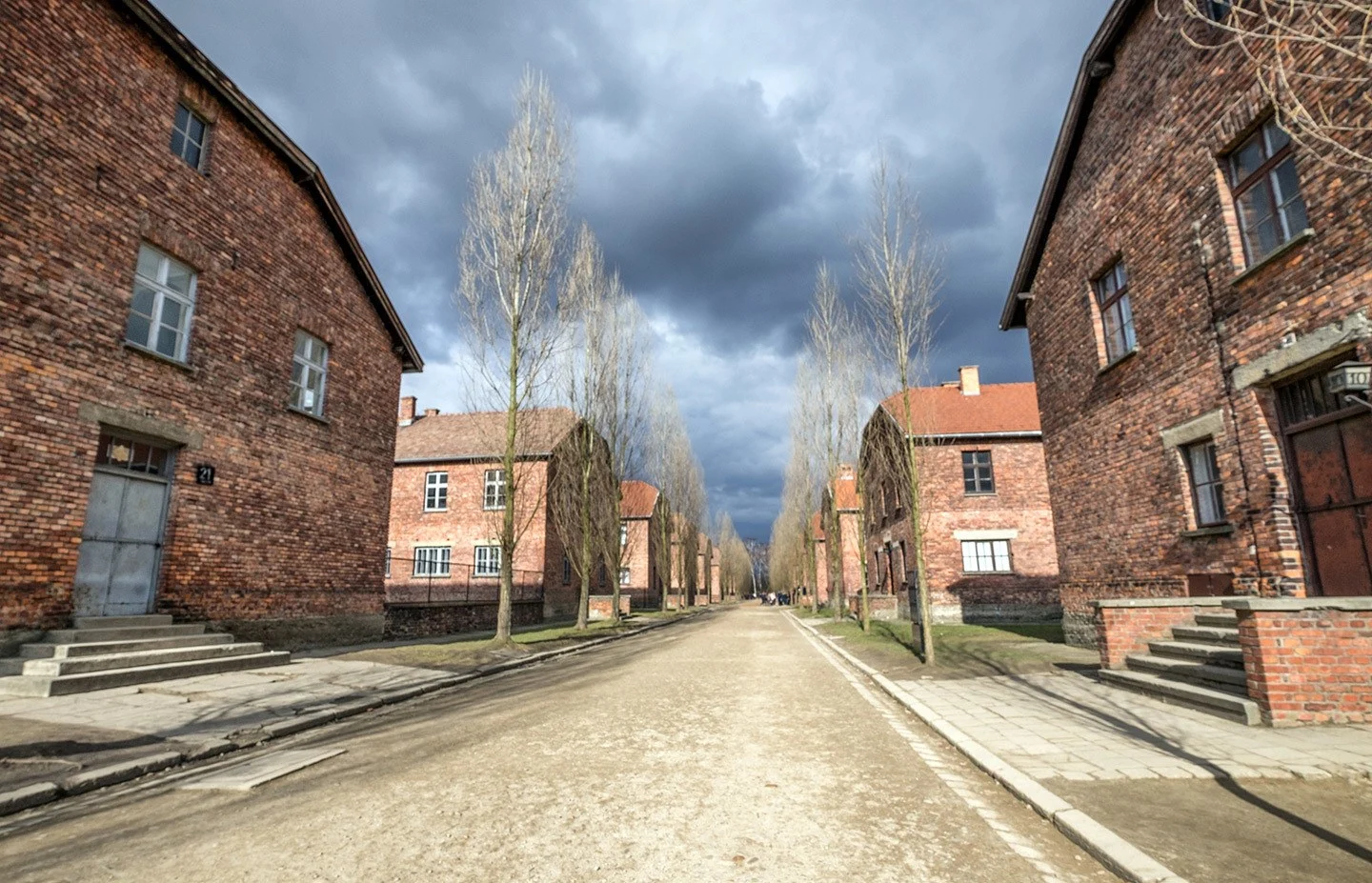
Rows of huts
Most heartbreaking of all there are the piles of people’s belongings – the huge stacks of suitcases, shoes, cups and bowls that people brought with them when they thought they were just being sent away to work and someday they’d be going home.
Then there are the eerie piles of glasses, wooden legs and human hair. Taking people’s clothes, belongings and shaving their hair all helped the Nazis strip them of their humanity. But walking along the hut corridors you can see lines of faces looking down at you. In the early days of the camp new arrivals were photographed and recorded, until the numbers got too big to keep up.

Piles of suitcases
Looking into their eyes, you can see a mixture of fear, horror and defiance. Seeing their faces, reading their names, their nationalities, ages and occupations brings humanity back to the people who’ve been dehumanised. It helps you to translate abstract numbers into real people.
You can’t help imagining how you would have coped if you had been there in their place – would hunger, cold and disease have seen you off before the gas chamber did, or would you be one of the few that made it through? Because in among all the horror there are stories of defiance and survival, of people who made it through despite the odds.

Barbed wire strip at Auschwitz I
Auschwitz asks as many questions as it answers. And the big one is should thousands of visitors – from stag parties to school groups – be visiting a place where so many people died? For me it was a sombre experience that’s been hard to shake off, but one that was so important to have. As a quote at Auschwitz says: “Those who do not remember the past are condemned to repeat it”.
Looking at the camps 70 years on it’s hard for us to imagine how this could have ever happened. But in a world that’s still filled with hate, is it really that impossible? Visiting Auschwitz-Birkenau and seeing these places for yourself is something you’ll never forget – an experience to take away and hold onto like as a talisman that it will never happen again.

Quote on the wall at Auschwitz I
The details
The Auschwitz-Birkenau Memorial and Museum is located around 65km outside of Kraków, on the edge of the town of Oświęcim. The site is open from 7.30am every day, with the last entry time varying through the year (from 2pm in December to 7pm in June, July and August), and closing time is 90 minutes later. The site is free to enter – you can reserve a timed ticket either with or without a guided tour on their website.

Moody skies at Birkenhau
There are a few different options for getting to Auschwitz-Birkenau and touring the site. If you want to visit independently, you can catch the train from Kraków Glowny (the city’s main train station) to Oświęcim, which takes around 1 hour 40 minutes and costs 15.60 złoty (£3). The station is 2km from the camp so it’s 25 minutes’ walk or you can catch a local bus.
Or there are buses direct from Kraków’s main bus station, Dworzec MDA, behind the train station. They take around 1 hour 40 minutes and cost 10–12 złoty each way. There are several different companies along the same route so buying single tickets gives you more flexibility. Auschwitz and Birkenau are 3.5km apart, so you can either walk between them or take the free shuttle bus which runs every 10 mins from April–October and every 30 mins the rest of the year.

Behind the wire
It’s helpful to have a guide, especially if you don’t know too much of the history. You can join a small group tour when you get to Auschwitz which take 3.5 hours and is run in lots of different languages. They cost 50 złoty (£10.50) and you need to book well in advance in high season.
Or you can take a tour from Kraków which includes transportation. There are tons of these advertised around Kraków from 100 złoty, but groups can be big and you do get marched around a bit. We had a driver and private guide for the day (165 złoty/£34 each) which meant we could walk around at our own pace but had someone to answer any questions.

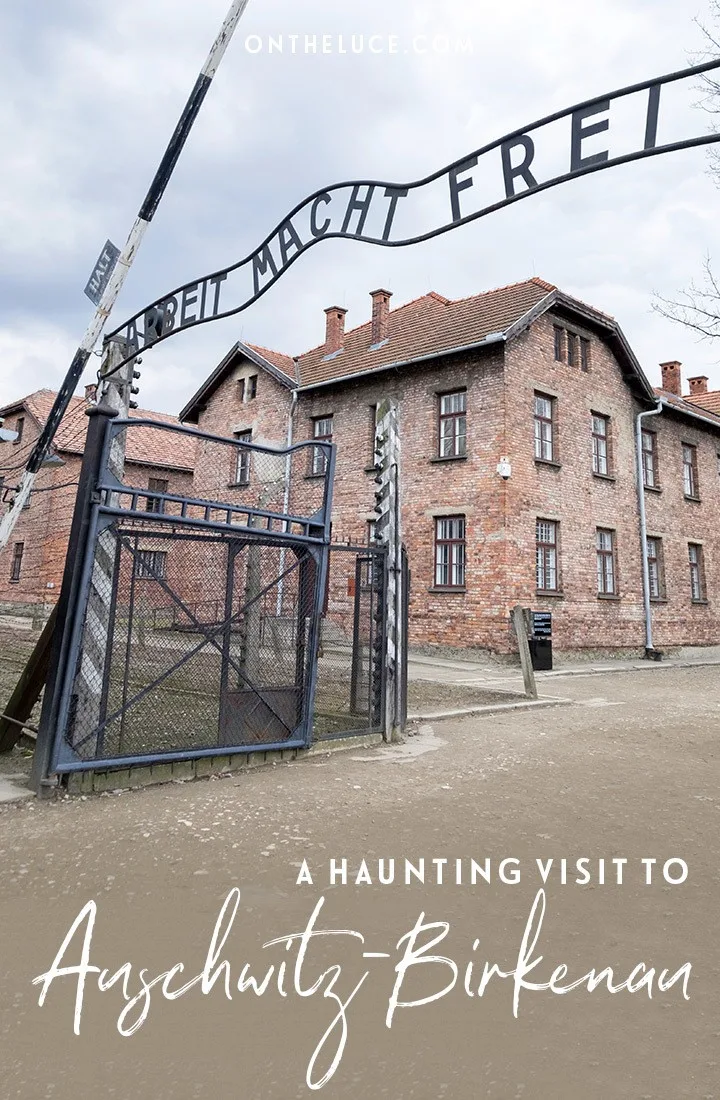

Jim Hartman
Wednesday 27th of January 2021
I visited Dachau in 2018. It was tiny compared to this. I was ready for everything except the torture chambers. That was just one building.
Lucy Dodsworth
Thursday 4th of February 2021
Sounds like another very moving and difficult place to visit.
Kay Farrell
Friday 18th of September 2020
I visited Auschwitz and Birkenau just yesterday. The inhuman and vicious way the Nazi's treated those poor souls and all the memorobila will always stay with me. My friend and i planted a ceramic poppy under a tree as a mark of respect. I will never forget the atrocities that took place, it was horrific and cruel beyond words. God rest all their souls
Lucy Dodsworth
Monday 28th of September 2020
It is such a moving place to visit – hard to experience but important so we never forget.
Cait
Thursday 16th of May 2019
I loved reading your blog post! I'll be visiting Krakow in June and visiting Auschwitz is on my list of things to do, what company/ website did you use to book your transportation and guide to and from Auschwitz?
Lucy
Sunday 26th of May 2019
Hi our driver was arranged through our accommodation but it was with this company http://krakowauschwitz.com/ (the guy we had was called Damian).
George
Tuesday 30th of April 2019
You mustn't be scared of visiting Auschwitz. I had reason to visit, not knowing what happened to my Polish grandparents whom I never got to know. It's a past that we mustn't forget and there are too many people who deny it ever happened. I'm just back from Krakow and wrote a post describing my experience for what it's worth.
"The countryside around Auschwitz resembles a nothingness reflecting the absurdity of human evil. I left it behind but will never forget that, for a few hours at least, I breathed the same air, walked on the same ground, and acknowledged what thousands of ordinary people who led extraordinary lives had been through. And for that, I am grateful." https://wp.me/p7YmT8-4tT
Lucy
Tuesday 14th of May 2019
Thanks for your comment, it's such a moving place and really does resonate deeply to visit.
Sonam
Saturday 9th of March 2019
Great article and very well written. I can almost feel your emotions by reading your words and looking at the haunting pictures. I am a big WW2 history buff, especially the rise and fall of the Nazis. I live in the United States and have asked myself do I need to go to Auschwitz at least once in my lifetime. But I believe I should. The story of Auschwitz cannot be completely understood through readings and documentaries. I wish to feel what you felt when you visited there. Thanks for a great article.
Lucy
Sunday 10th of March 2019
Thanks so much, it was such a moving place and experience – one I'll never forget.